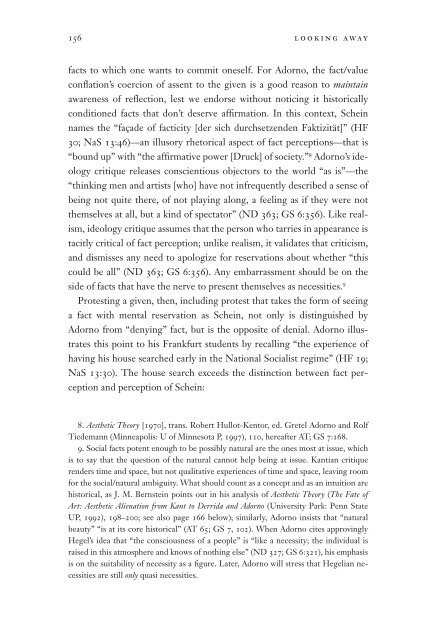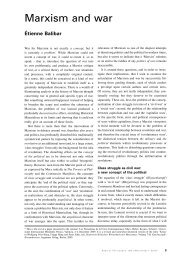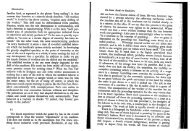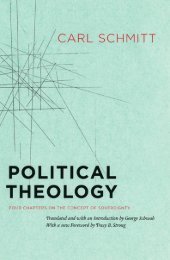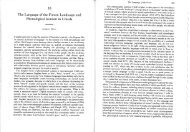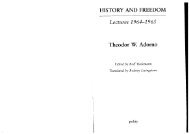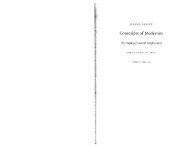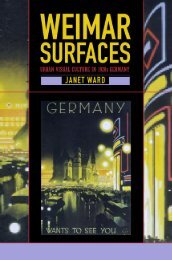Terada - Looking Away (Selections).pdf - Townsend Humanities Lab
Terada - Looking Away (Selections).pdf - Townsend Humanities Lab
Terada - Looking Away (Selections).pdf - Townsend Humanities Lab
Create successful ePaper yourself
Turn your PDF publications into a flip-book with our unique Google optimized e-Paper software.
156 looking away<br />
facts to which one wants to commit oneself. For Adorno, the fact/value<br />
conflation’s coercion of assent to the given is a good reason to maintain<br />
awareness of reflection, lest we endorse without noticing it historically<br />
conditioned facts that don’t deserve affirmation. In this context, Schein<br />
names the “façade of facticity [der sich durchsetzenden Faktizität]” (HF<br />
30; NaS 13:46)—an illusory rhetorical aspect of fact perceptions—that is<br />
“bound up” with “the affirmative power [Druck] of society.” 8 Adorno’s ideology<br />
critique releases conscientious objectors to the world “as is”—the<br />
“thinking men and artists [who] have not infrequently described a sense of<br />
being not quite there, of not playing along, a feeling as if they were not<br />
themselves at all, but a kind of spectator” (ND 363; GS 6:356). Like realism,<br />
ideology critique assumes that the person who tarries in appearance is<br />
tacitly critical of fact perception; unlike realism, it validates that criticism,<br />
and dismisses any need to apologize for reservations about whether “this<br />
could be all” (ND 363; GS 6:356). Any embarrassment should be on the<br />
side of facts that have the nerve to present themselves as necessities. 9<br />
Protesting a given, then, including protest that takes the form of seeing<br />
a fact with mental reservation as Schein, not only is distinguished by<br />
Adorno from “denying” fact, but is the opposite of denial. Adorno illustrates<br />
this point to his Frankfurt students by recalling “the experience of<br />
having his house searched early in the National Socialist regime” (HF 19;<br />
NaS 13:30). The house search exceeds the distinction between fact perception<br />
and perception of Schein:<br />
8. Aesthetic Theory [1970], trans. Robert Hullot-Kentor, ed. Gretel Adorno and Rolf<br />
Tiedemann (Minneapolis: U of Minnesota P, 1997), 110, hereafter AT; GS 7:168.<br />
9. Social facts potent enough to be possibly natural are the ones most at issue, which<br />
is to say that the question of the natural cannot help being at issue. Kantian critique<br />
renders time and space, but not qualitative experiences of time and space, leaving room<br />
for the social/natural ambiguity. What should count as a concept and as an intuition are<br />
historical, as J. M. Bernstein points out in his analysis of Aesthetic Theory (The Fate of<br />
Art: Aesthetic Alienation from Kant to Derrida and Adorno (University Park: Penn State<br />
UP, 1992), 198–200; see also page 166 below); similarly, Adorno insists that “natural<br />
beauty” “is at its core historical” (AT 65; GS 7, 102). When Adorno cites approvingly<br />
Hegel’s idea that “the consciousness of a people” is “like a necessity; the individual is<br />
raised in this atmosphere and knows of nothing else” (ND 327; GS 6:321), his emphasis<br />
is on the suitability of necessity as a figure. Later, Adorno will stress that Hegelian necessities<br />
are still only quasi necessities.


